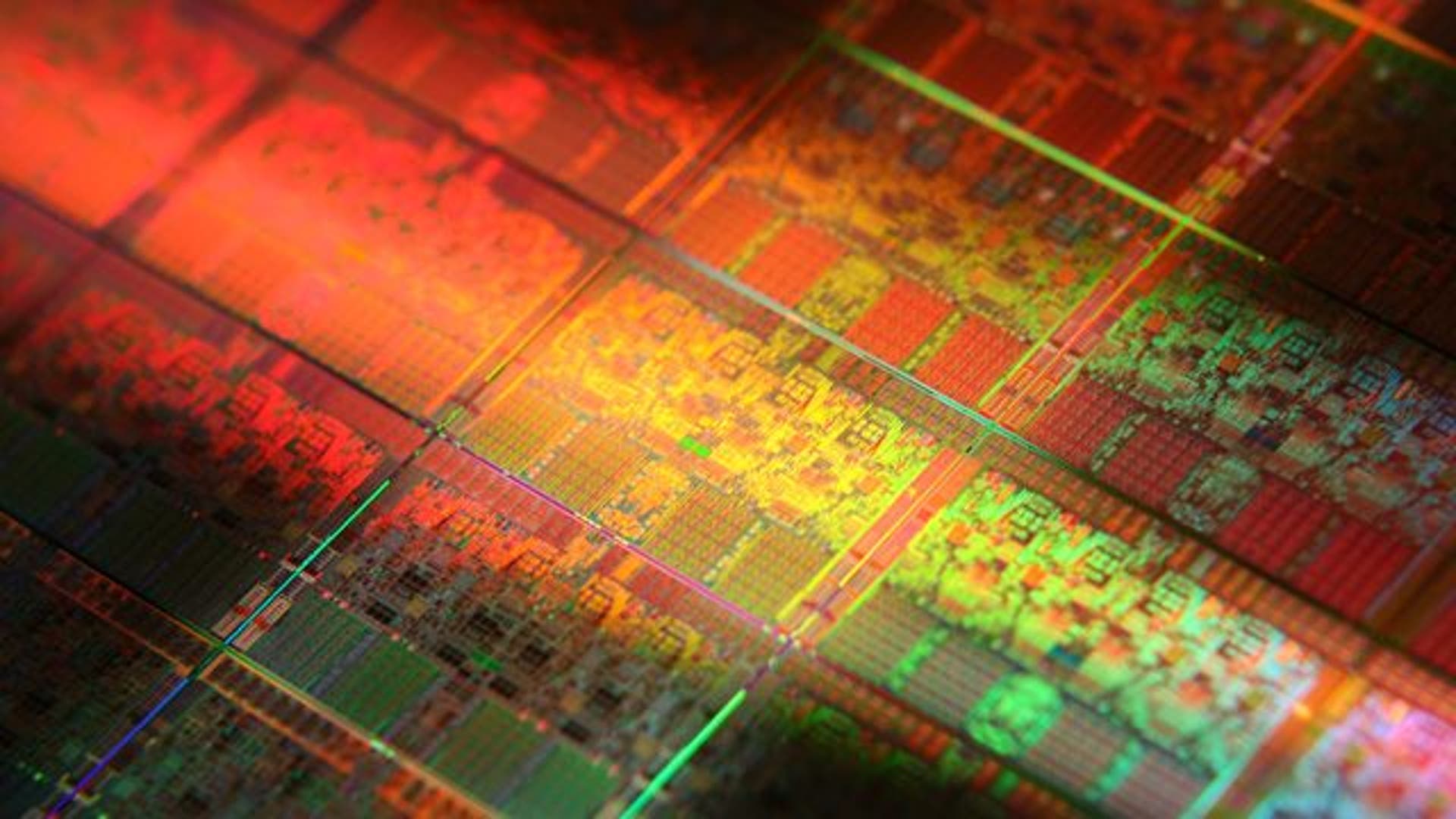Move Back
ADVERTISEMENT
Skip- Published24 Images
From Sand to Silicon: How a CPU Is Made
Ever wonder how Intel makes a CPU? Here's a glimpse at some of the amazingly sophisticated work going on daily inside those cutting-edge fabrication plants.
![How Does Intel Make CPUs?]()
![How Does Intel Make CPUs?]()
![It Starts with Sand]()
![Melted Silicon]() Silicon is purified in multiple steps to finally reach semiconductor manufacturing quality, called Electronic Grade Silicon. Electronic Grade Silicon may only have one alien atom for every one billion silicon atoms. In this picture you can see how one big crystal is grown from the purified silicon melt. The resulting mono crystal is called an ingot.read moreIntel CorporationShare
Silicon is purified in multiple steps to finally reach semiconductor manufacturing quality, called Electronic Grade Silicon. Electronic Grade Silicon may only have one alien atom for every one billion silicon atoms. In this picture you can see how one big crystal is grown from the purified silicon melt. The resulting mono crystal is called an ingot.read moreIntel CorporationShare![A Silicon Ingot]()
![Ingot Slicing]()
![Applying Photo Resist]()
![Exposure]() The photo resist finish is next exposed to ultra violet (UV) light. The chemical reaction triggered by that process is similar to what happens to film in a camera the moment you press the shutter: The photo resist finish that's exposed to UV light will become soluble. The exposure is done using masks that act like stencils, which create the various circuit patterns on each layer of the microprocessor. A lens (middle) reduces the mask's image, so what gets printed on the wafer is typically four times smaller linearly than the mask's pattern.read moreIntel CorporationShare
The photo resist finish is next exposed to ultra violet (UV) light. The chemical reaction triggered by that process is similar to what happens to film in a camera the moment you press the shutter: The photo resist finish that's exposed to UV light will become soluble. The exposure is done using masks that act like stencils, which create the various circuit patterns on each layer of the microprocessor. A lens (middle) reduces the mask's image, so what gets printed on the wafer is typically four times smaller linearly than the mask's pattern.read moreIntel CorporationShare![Exposure]() Although usually hundreds of microprocessors are built on a single wafer, we'll focus on a small piece of a microprocessor — a individual transistor. A transistor acts as a switch, controlling the flow of electrical current in a computer chip. They're so small that 30 million could fit on the head of a pin.read moreIntel CorporationShare
Although usually hundreds of microprocessors are built on a single wafer, we'll focus on a small piece of a microprocessor — a individual transistor. A transistor acts as a switch, controlling the flow of electrical current in a computer chip. They're so small that 30 million could fit on the head of a pin.read moreIntel CorporationShare![Washing]()
![Etching the Chip]()
![Removing Photo Resist]()
![Applying Photo Resist]()
![Ion Implantation]() Through a process called ion implantation,the exposed areas of the silicon wafer are bombarded with various chemical impurities called ions. Ions are implanted in the silicon wafer to alter the way silicon in these areas conducts electricity. Ions are shot onto the surface of the wafer at very high speed. An electrical field accelerates the ions to a speed of over 185,000 mph.read moreIntel CorporationShare
Through a process called ion implantation,the exposed areas of the silicon wafer are bombarded with various chemical impurities called ions. Ions are implanted in the silicon wafer to alter the way silicon in these areas conducts electricity. Ions are shot onto the surface of the wafer at very high speed. An electrical field accelerates the ions to a speed of over 185,000 mph.read moreIntel CorporationShare![Removing Photo Resist]()
![Ready Transistor]()
![Electroplating]()
![After Electroplating]()
![Polishing]()
![Metal Layers]() Multiple metal layers are created to connect the various transistors (they're just like wires). These connections are determined by the architecture and design teams that develop the functionality of the processor. While computer chips look extremely flat, they may actually have over 20 of these layers, forming complex circuitry. If you look at a magnified view of a chip, you will see an intricate network of circuit lines and transistors that look like a futuristic, multi-layered highway system.read moreIntel CorporationShare
Multiple metal layers are created to connect the various transistors (they're just like wires). These connections are determined by the architecture and design teams that develop the functionality of the processor. While computer chips look extremely flat, they may actually have over 20 of these layers, forming complex circuitry. If you look at a magnified view of a chip, you will see an intricate network of circuit lines and transistors that look like a futuristic, multi-layered highway system.read moreIntel CorporationShare![Wafer Sort Test]()
![Wafer Slicing]()
![Packaging]() Three elements are put together to form a completed processor. The green substrate builds the electrical and mechanical interface for the processor to interact with the rest of the PC. The silver heatspreader is a thermal interface that a cooling device will be placed on.read moreIntel CorporationShare
Three elements are put together to form a completed processor. The green substrate builds the electrical and mechanical interface for the processor to interact with the rest of the PC. The silver heatspreader is a thermal interface that a cooling device will be placed on.read moreIntel CorporationShare![Completed Processor]()
- Published24 Images
From Sand to Silicon: How a CPU Is Made
Ever wonder how Intel makes a CPU? Here's a glimpse at some of the amazingly sophisticated work going on daily inside those cutting-edge fabrication plants.
Move Forward
- From Sand to Silicon: How a CPU Is Made
























Thumbnail View
Image 0 of 24























